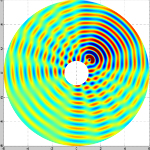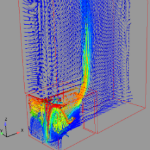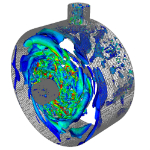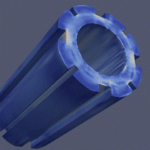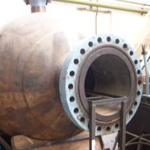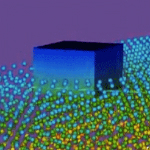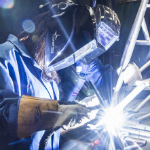-2000x600.jpg)
Our research
Research in this centre covers the entire range of the engineering sciences, from the microstructure of materials to the flow of ocean currents. Our researchers work with the power generating industries, including renewable energy, aerospace, automotive, biomechanics and civil engineering companies.
MaSC areas of activity
The Centre continues to establish and develop an active portfolio of research against the following key areas of activity
- Multi-scale Multi-physics Modelling for Engineering Application
At the core of our research we have a strong and internationally recognized track record of developing and refining a wide range of computational models (FVM, SPH, FEM, LBM). Potential is high to position MaSC as a conduit to strengthen existing interactions with academics in CEAS, EES and Materials who are engaged in similar activities. Our research strengths cover a range of multi-physics phenomena and are developed to span a range of physical scales. These include turbulence mechanics, multiphase and free-surface flow, fluid structure interaction, combustion and fire, crack propagation and growth. We seek to build on this work by enabling efficient coupling between these areas to address key industrial challenges, such as energy storage and fusion, and by adapting them for use in different domains. - Data Science for Computational Engineering
An essential area of development, needed to realise the promise of computational engineering as a practical and efficient tool for design optimisation, uncertainty quantification, digital twinning and virtual/augmented environments. Integration of AI and Machine Learning methods provide a systematic and adaptable framework for leveraging our extensive expertise in physical modelling. A synergistic approach is needed to address the system-level challenges presented by industry; data science methods will have limited success without underlying expertise in physical modelling, and vice versa. - Future Integration of Computational Engineering
New use modes of simulation are emerging, beyond the standard application of computational engineering software in traditional hardware. The use of novel hardware on distributed architecture, the emergence of exascale platforms for high performance computing, where in-situ data analysis/visualization is increasingly essential. Incorporation of VR/AR systems to enable interactive design and analysis. System-level Simulation leading to Digital Twinning. Use of cloud based and edge computing for continuous training of models via AI algorithms. - Research Software Infrastructure
The development of open-source software is at the centre of our work, with our modelling capabilities represented by a series of opensource software tools where we integrate and champion the research achievements from our groups (Code_Saturne, SPHysics, OpenFOAM, ParaFEM, LUMA). Regular turnover of developers and multiuser collaboration requires robust software management; e.g. automatic validation, repeatability, continuous integration. In this aspect we rely on expertise from Research Software Engineers and would benefit from greater interaction with staff in Computer Science.
Specialisms
Our research interests range from the fundamental physics of turbulent flow to strategies for simulations involving multiple failure mechanisms and the challenges of modelling the interaction between fluid flow and structural behaviour.
Browse this Centre’s specialisms below.
-
Acoustic flows
Our researchers are examining the usefulness of hybrid modelling strategies for acoustic flows. We have shown that for a number of scenarios where there is a near-field source and a far-field observer adjacent to a compact body, the specific approximation to the Green's function for the Helmholtz equation can be computed numerically. The numerical Green's function may then be passed to an acoustic analogy for solution of the far-field sound.
-
Combustion and heat transfer
Our researchers look at buoyant plumes as a precursor to fires to quantify the stress strain misalignment and construct a Reynolds stress-like behaviour in a simple linear eddy viscosity models (EVM). We also study heat transfer on fractal structures, dyadic cantor product spaces and Sierpinski gaskets. Another aspect being studied is the role of strain eigenvector or scalar gradient misalignment in the scalar dissipation transport equation.
-
Fluid mechanics
Our work on turbulence modelling focuses on developing a formal structure for multiscale methods, in order to develop multi-resolution representations of differential operators, dyadic and triadic nonlinearities. We also work on fluid structure interaction - developing a weighted transport equation approach that ties together the strengths of FEM and finite volume methods - and direct numerical simulation in the development of local boundary conditions for time dependent, Low Mach number turbulent reacting flows.
-
Fracture and structural integrity
Our areas of focus include a technique for linking length scales so we can use physically based models of the mechanics of materials embedded within a conventional finite element package. We examine micro-polar mechanics of distributed cracking in rocks, plasticity in metals and cleavage fracture in steels. We use Green’s function to model the heat source during narrow gap TIG welding, and use multiscale modelling of fracture for local approaches to cleavage, ductile void nucleation, growth and coalescence.
-
Material and structural response at high strain rate
This area of research focuses on impact and blast dynamics and how extreme loads inform our understanding of structural crashworthiness, penetration and ballistic mechanics and protective technology. We also cover multiscale modelling of cellular and heterogeneous material behaviours; material characterisation at high strain rate; and structural response to impact and blast loads based on numerical modelling and scaled model tests from low to hypervelocity.
-
Smoothed particle hydrodynamics
This meshless method is opening up the possibility of research into fields that were well beyond any modelling capability but are now being actively pursued, such as violence free-surface flows. The method predicts fluid pressure, velocities, energy and particle trajectories for many types of flows, making it ideal for identifying formation mechanisms of complicated flow phenomena. Practical applications include wave-breaking, flooding and tsunami impact, flows around wave energy devices and behaviour of nuclear sludge.
-
Welding technology
The microstructural changes imposed by welding have a profound influence on subsequent performance. Our aim is to extend weld modelling into a multidisciplinary tool that can predict both continuum behaviour and microstructural parameters, and so predict long-term structural performance and be used for 'virtual prototyping' of novel weld processes and procedures in industries including nuclear energy, oil and gas.

